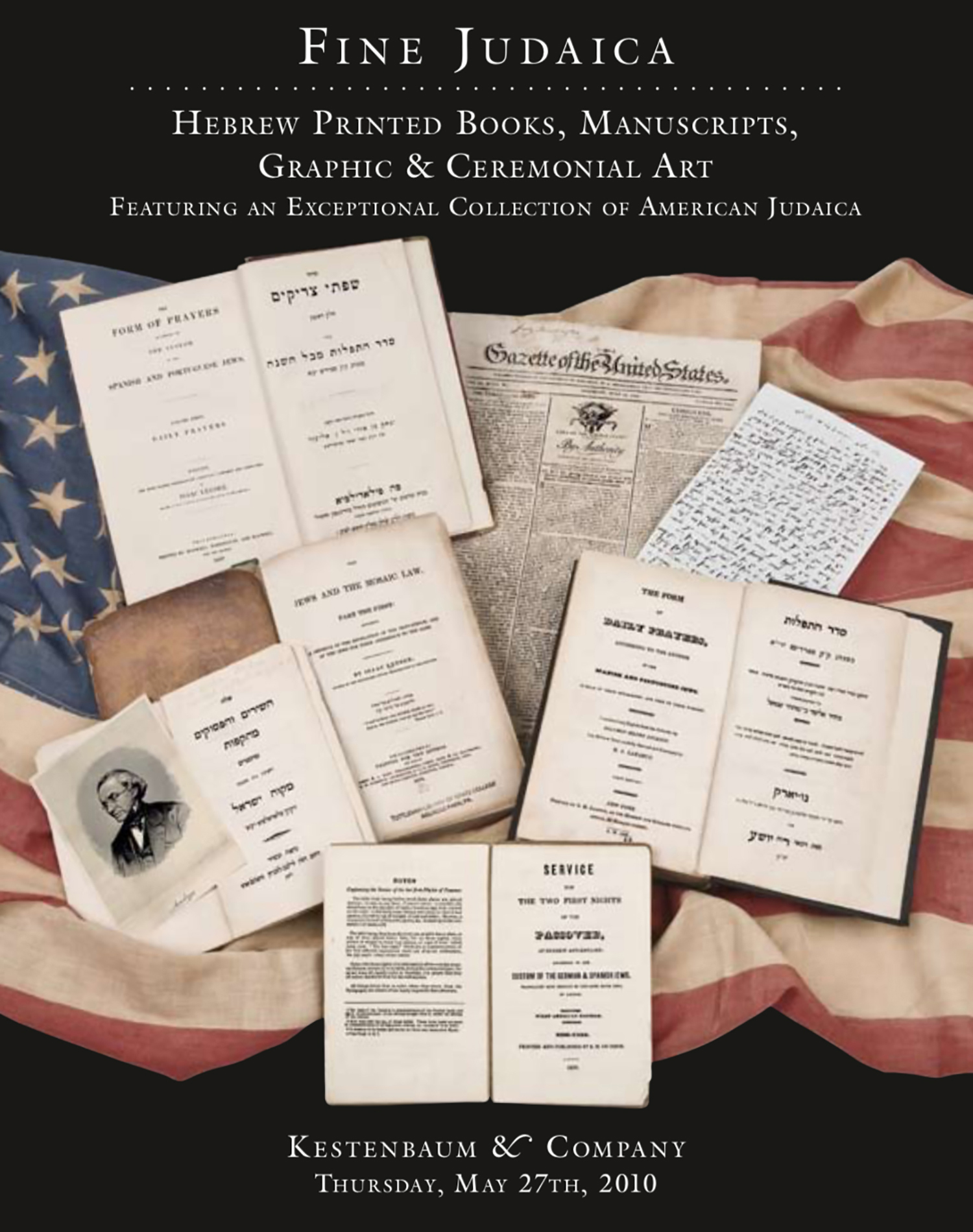(SheLa”H HaKadosh). Shnei Luchoth HaBrith. Issued with Vavei HaAmudim by Author's son Shabthai Sheftel Horowitz.

AUCTION 48 |
Thursday, May 27th,
2010 at 1:00
Fine Judaica: Hebrew Printed Books, Manuscripts, Graphic & Ceremonial Art Featuring an Exceptional Collection of American Judaica
Lot 121
HOROWITZ, ISAIAH BEN ABRAHAM HALEVI
(SheLa”H HaKadosh). Shnei Luchoth HaBrith. Issued with Vavei HaAmudim by Author's son Shabthai Sheftel Horowitz.
Amsterdam: Immanuel ben Joseph Athias 1698
Est: $1,200 - $1,800
PRICE REALIZED $2,400
This edition of the SHeLa”H’s extensive work on Halachah, Kabbalah and ethical philosophy is considered one of the most beautifully produced Hebrew printed books. Chassidim consider this edition especially noteworthy, as it was published the year the venerable Baal Shem Tov was born. Many of the teachings of Chassiduth have their source in the SHela"H HaKadosh.
NEXT TIME:
Part Halachic Code and part Kabbalistic treatise, the Shnei Luchoth HaBerith (abbreviated to SheLa”H), exerted great influence on the life of the Jews of Eastern Europe and helped more than any other book to introduce the Kabbalah into daily religious life. “Horowitz…introduced many customs in the ritual and in the observance of other laws which have no basis otherwise except in the Kabbalah, and because of his authority they were accepted by a great part of Jewry” (M. Waxman, A History of Jewish Literature [1933], Vol. II, pp. 421). Prof. Scholem observed that "despite the bulkiness of the work, its expressive power and rich contents made it a classic" (G. Scholem, Kabbbalah [1974], p. 195).
See EJ, Vol. VIII, cols. 990-994.
A native of Prague, R. Isaiah Halevi Horowitz (1565? -1630), was educated in the talmudic academies of Poland. After a stint as Av-Beth-Din of Frankfurt a/Main, he served as Rabbi of Prague. In 1621, he settled in Jerusalem, where he became Rabbi of the Aschkenazic community of the city. In Eretz Israel, he availed himself of the esoteric teachings of R. Isaac Luria (1534-1572), known as "Ari" ("the Lion") and his disciples. These kabbalistic teachings, only recently revealed, were duly incorporated in Horowitz's magnum opus, Shnei Luchoth HaBerith.
